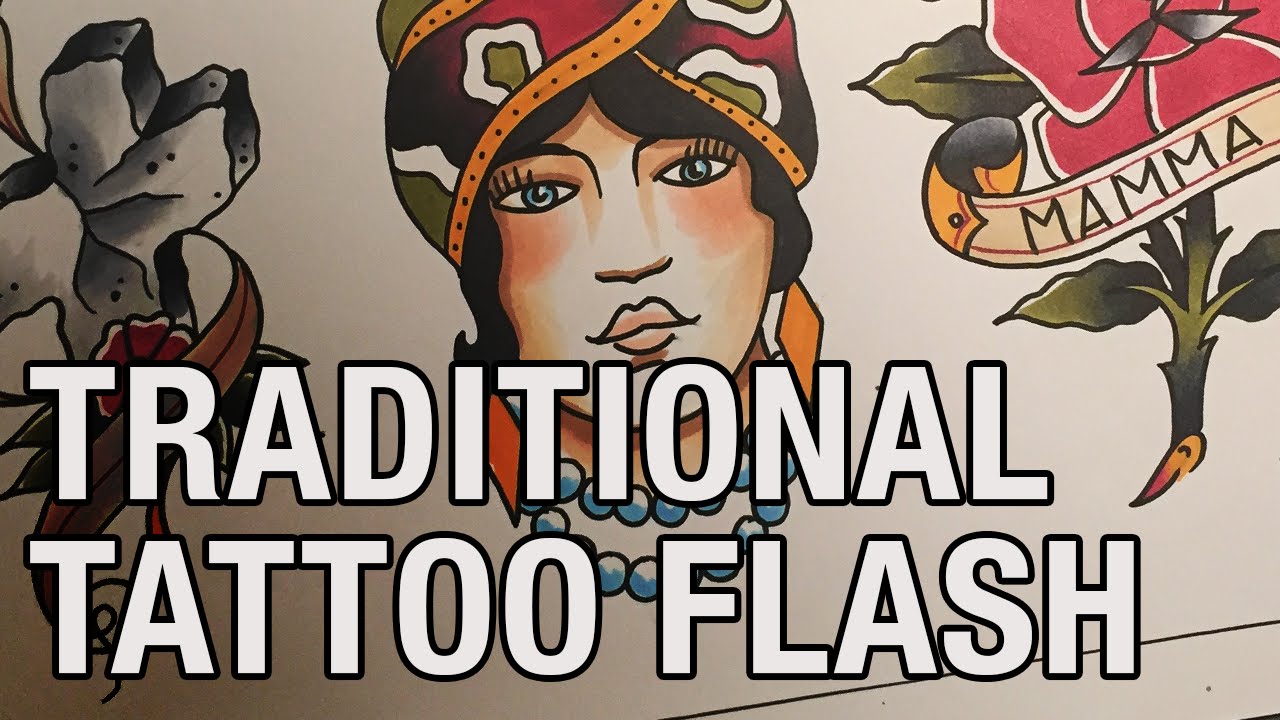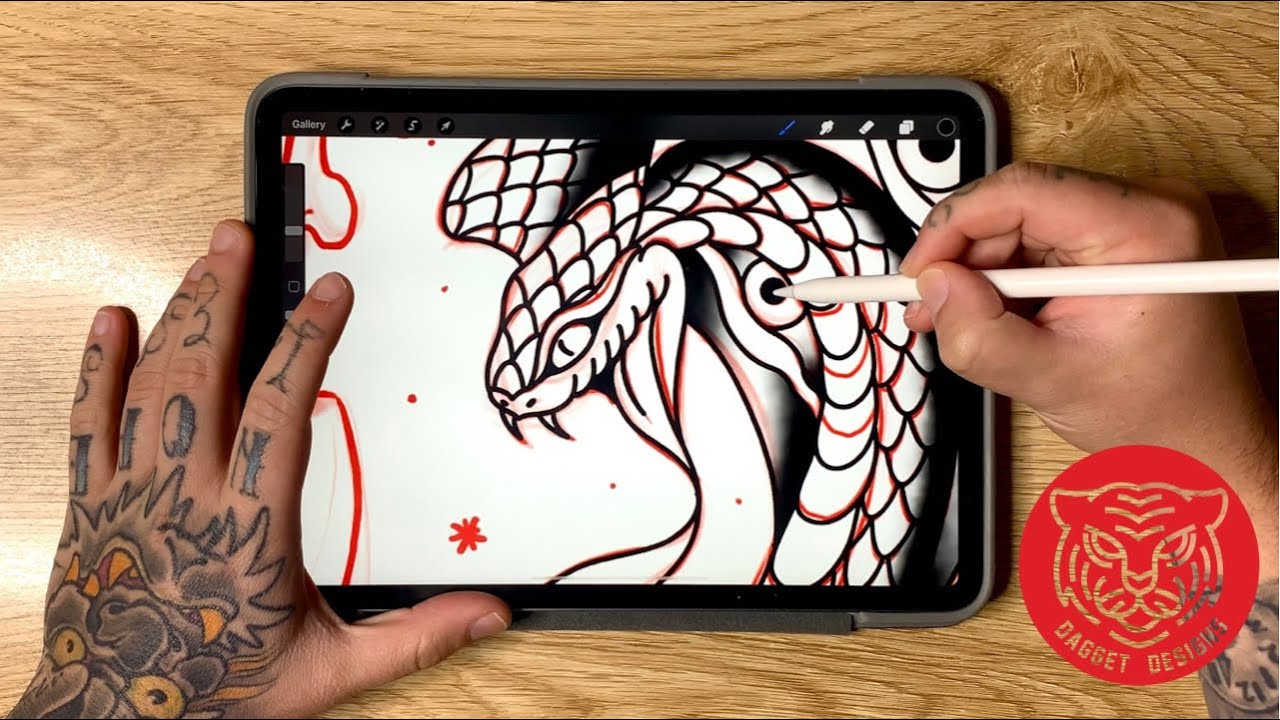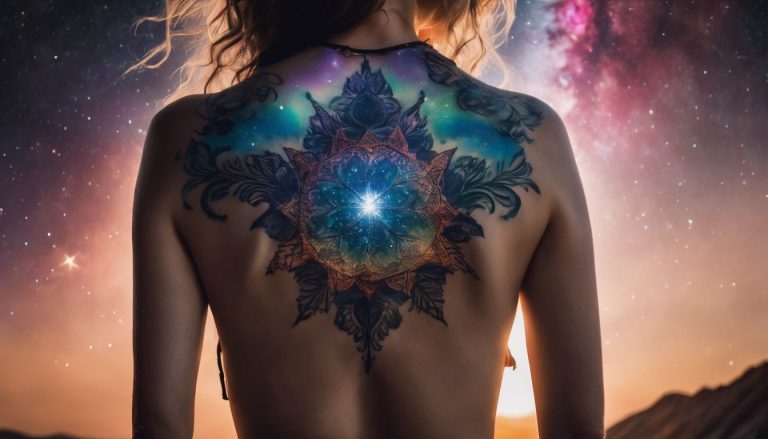Exploring the Meaning and History of Traditional Tattoo Flash Designs
Create your own unique tattoos and art for your home
Tattoos tell stories, but understanding their past can be tricky. Traditional tattoo flash has been inked on skin for over a century, a testament to its enduring charm. Our blog dives into the origins and meanings of these iconic designs, making the old school new again for you.
Get ready to unlock the secrets behind every vibrant line and bold shade!
Key Takeaways
- Traditional tattoo flash designs date back to the early 1900s and were pioneered by iconic artists like Sailor Jerry and Bert Grimm, showcasing their skills to potential customers.
- These designs feature bold black outlines, vivid colors, and classic symbols such as hearts with daggers, roses, thorn crowns with drops of blood; they’re connected to sailor culture and embody meanings of love, perseverance, freedom, and faith.
- American traditional tattoos incorporate elements from various cultures including Native American motifs like feathers or headdresses for heritage acknowledgment and Asian art influences which add mystical patterns.
- The modern evolution of these tattoos has led to “neotraditional” styles that fuse classic imagery with contemporary artistry while maintaining significant cultural symbolism.
- Traditional tattoo flash continues to influence merchandise and fine art far beyond its roots in tattoo parlors; its time-honored aesthetics decorate clothing, accessories, home décor items, paintings, illustrations.
What is Traditional Tattoo Flash and its Purpose?
Traditional tattoo flash refers to the pre-drawn designs that are displayed in tattoo shops for clients to choose from. These designs have a rich history and were originally used as a way for tattoo artists to showcase their skills and attract customers.
Today, traditional tattoo flash continues to be an important part of tattoo culture and serves as inspiration for many contemporary styles.
A Brief History of Traditional Tattoo Flash
Traditional tattoo flash sprang from the need for quick and efficient ways to ink patrons in the early 1900s. Iconic artists like Sailor Jerry and Bert Grimm contributed designs that became staples of this style.
They created sheets of pre-drawn images, which allowed customers to select tattoos on the spot, making the process faster and turning it into a bustling business.
Tattoo machines revolutionized how these designs were applied, leading to broader adoption and evolution of American traditional tattoos. The style is known for thick black outlines, vivid colors, and classic themes such as hearts, daggers, roses, ribbons, thorn crowns with drops of blood.
These symbols have maintained their popularity due to their deep-rooted meanings and connections to sailor culture, emphasizing the rich history behind each piece of traditional tattoo flash art.
Evolution of Traditional Tattoo Flash Designs
Transitioning from the historical roots of traditional tattoo flash, its evolution has seen a remarkable transformation over time. Traditional tattoo flash designs have undergone significant changes, influenced by cultural shifts and advancements in artistic expression.
These designs have evolved to encompass a broader range of motifs and themes, reflecting a fusion of traditional and contemporary elements. As technology advanced, artists began incorporating new techniques into their creations, resulting in a diverse array of styles that resonate with modern audiences.
The evolution of traditional tattoo flash designs is characterized by an amalgamation of old-school aesthetics with innovative concepts. Tattooists have expanded the repertoire of classic American traditional tattoos to include bold color palettes, intricate linework, and dynamic compositions while retaining the timeless appeal rooted in tradition.
Symbolism and Meaning Behind Traditional Tattoo Flash
Explore the common elements and symbols found in traditional tattoo flash designs, and delve into their cultural and historical significance. Understand the deeper meanings behind heart tattoos, dagger tattoos, rose tattoos, ribbon tattoos, thorn crown tattoos, blood drop tattoos, and other classic designs.
Common Elements in Traditional Tattoo Flash Designs
American traditional tattoos feature common elements that hold symbolic meanings and cultural significance, including:
- Geometric shapes: Triangles, diamonds, and circles symbolize stability, strength, and eternity.
- Nautical themes: Anchors and ships represent steadfastness, guidance, and a love for the sea.
- Florals: Roses signify love and passion while daggers symbolize protection or bravery.
- Animals: Eagles embody freedom and power, while tigers represent strength and resilience.
- Symbols of luck: Horseshoes are believed to bring good fortune, while four-leaf clovers symbolize luck and prosperity.
- Text banners: Scrolls with phrases like “Mom” or “True Love” add personal meaning to the design.
- Cultural symbols: Native American motifs like feathers or headdresses honor heritage and spirituality.
- Religious icons: Crosses for faith, praying hands for devotion, or thorn crowns for sacrifice convey religious beliefs.
Cultural and Historical Significance
Transitioning from the common elements in traditional tattoo flash designs to their cultural and historical significance, American traditional tattoos hold deep-rooted meanings and a rich history.
These tattoos have been a form of artistic expression for thousands of years, with symbols such as thorn crowns, hearts with daggers, roses, ribbons, and scrolls bearing significant cultural importance.
Influenced by legendary tattoo artists like Norman ‘Sailor Jerry’ Collins and George Burchett, these classic designs often depict themes that reflect the heritage of Native American and Asian art.
The evolution of traditional tattoo flash reflects its enduring appeal and timelessness. With symbolic meanings deeply ingrained in these timeless designs, the historical significance lies in the enduring popularity over many decades.
Influences and Inspirations for Traditional Tattoo Flash Designs
Traditional tattoo flash designs have been heavily influenced by sailor culture, with motifs such as anchors, ships, and nautical stars being commonly featured. Additionally, traditional designs have also drawn inspiration from Native American and Asian art, incorporating elements like feathers and dragons into their iconic imagery.
Traditional Designs and their Connection to Sailor Culture
Sailor culture has had a significant influence on traditional tattoo designs. Sailors, particularly in the early 20th century, played a crucial role in popularizing American traditional tattoos.
As they traveled around the world, sailors encountered different cultures and traditions, leading to the incorporation of various symbols and motifs into their tattoos. Icons such as anchors, nautical stars, swallows, and mermaids became commonly depicted in traditional flash designs due to their association with maritime life and superstitions.
Tattoo artists like Norman ‘Sailor Jerry’ Collins were instrumental in creating iconic Sailor Jerry flash designs that are still prevalent today. These timeless designs not only reflect the adventurous spirit of sailors but also carry symbolic significance related to protection, good luck, and perseverance.
Other Influences such as Native American and Asian Art
– Traditional Designs and their Connection to Sailor Culture have been complemented by other influences, such as Native American and Asian art. These additional inspirations have added depth and diversity to traditional tattoo flash designs, expanding the range of symbols and motifs used in this timeless art form.
The incorporation of elements from Native American culture brings an infusion of spirituality and connection to nature, while Asian art influences contribute intricate patterns, symbolic figures, and a sense of mysticism.
This blend results in a rich tapestry of imagery that continues to captivate enthusiasts seeking both historical significance and artistic expression within their tattoos.
The Popularity and Modern Adaptations of Traditional Tattoo Flash
The traditional tattoo flash designs have experienced a resurgence in popularity, with many contemporary tattoo artists incorporating these classic elements into their work. Additionally, traditional tattoo flash has also made its way into merchandise and art, becoming a timeless and iconic style in the world of tattoos.
Incorporation into Contemporary Tattoo Styles
American traditional tattoo flash designs have seamlessly integrated into contemporary tattoo styles, adapting to modern preferences while maintaining their timeless appeal. Neotraditional tattoos, an evolution of traditional designs, incorporate bold lines and vibrant colors, breathing new life into classic motifs like heart with daggers, roses and ribbons, thorn crowns and drops of blood, and scrolls with text.
This fusion has resulted in a resurgence of interest in classic tattoo flash among enthusiasts seeking a fresh take on enduring symbols. The incorporation of traditional elements into modern tattoos showcases the adaptability and enduring allure of this art form.
Moreover, the influence of traditional tattoo flash extends beyond skin art to merchandise and fine art pieces. Traditional flash designs grace various products such as apparel, accessories, and prints due to their iconic status in pop culture.
Use in Merchandise and Art
Incorporation into contemporary tattoo styles has led to traditional tattoo flash designs being widely adopted in merchandise and art. These timeless symbols and motifs, such as roses, thorn crowns, and scrolls with text, have found their way onto clothing, accessories, home decor items, and even fine art pieces.
The enduring appeal of traditional tattoo flash has made it a popular choice for merchandise designed to showcase the classic look and cultural significance of these tattoos. In the world of art, traditional tattoo flash designs continue to inspire artists across various mediums including paintings, illustrations, digital art, and sculpture.
The historical and symbolic depth of these designs adds a timeless quality to merchandise and brings a unique aesthetic to diverse forms of artistic expression.
Conclusion
In conclusion, traditional tattoo flash designs hold deep cultural significance and enduring appeal. The history of American traditional tattoos dates back to the early 1900s and has evolved over time.
Symbolism and meaning are integral components of these timeless art forms, making them a popular choice for many individuals seeking classic, expressive body art. Influenced by legendary tattoo artists, these designs continue to inspire modern adaptations and remain an essential part of tattoo culture today.
FAQs
1. What are traditional tattoo flash designs?
Traditional tattoo flash designs are pre-drawn pictures like hearts with daggers, roses, and ribbons that serve as templates for old school tattoos.
2. Can you tell me about the meanings in oldschool tattoo designs?
Yes! Many oldschool tattoo designs have deep meanings; for instance, heart tattoos might symbolize love or bravery, while thorn crowns can represent struggle or sacrifice.
3. How did traditional tattoos start?
The history of tattoos goes back thousands of years, with sailors often credited for popularizing the bold and simple styles we know as traditional tattoo symbols today.
4. Why do some people choose black and white traditional tattoo flash outlines?
Many choose traditional tattoo flash black and white outlines because they highlight the classic beauty of these timeless designs and their strong historical roots in tattoo history.
5. Are scrolls with text still common in today’s tattoos?
Absolutely! Scrolls with text remain a favorite element within modern flash tattoo designs, often used to convey personal messages or commemorate important life events.










